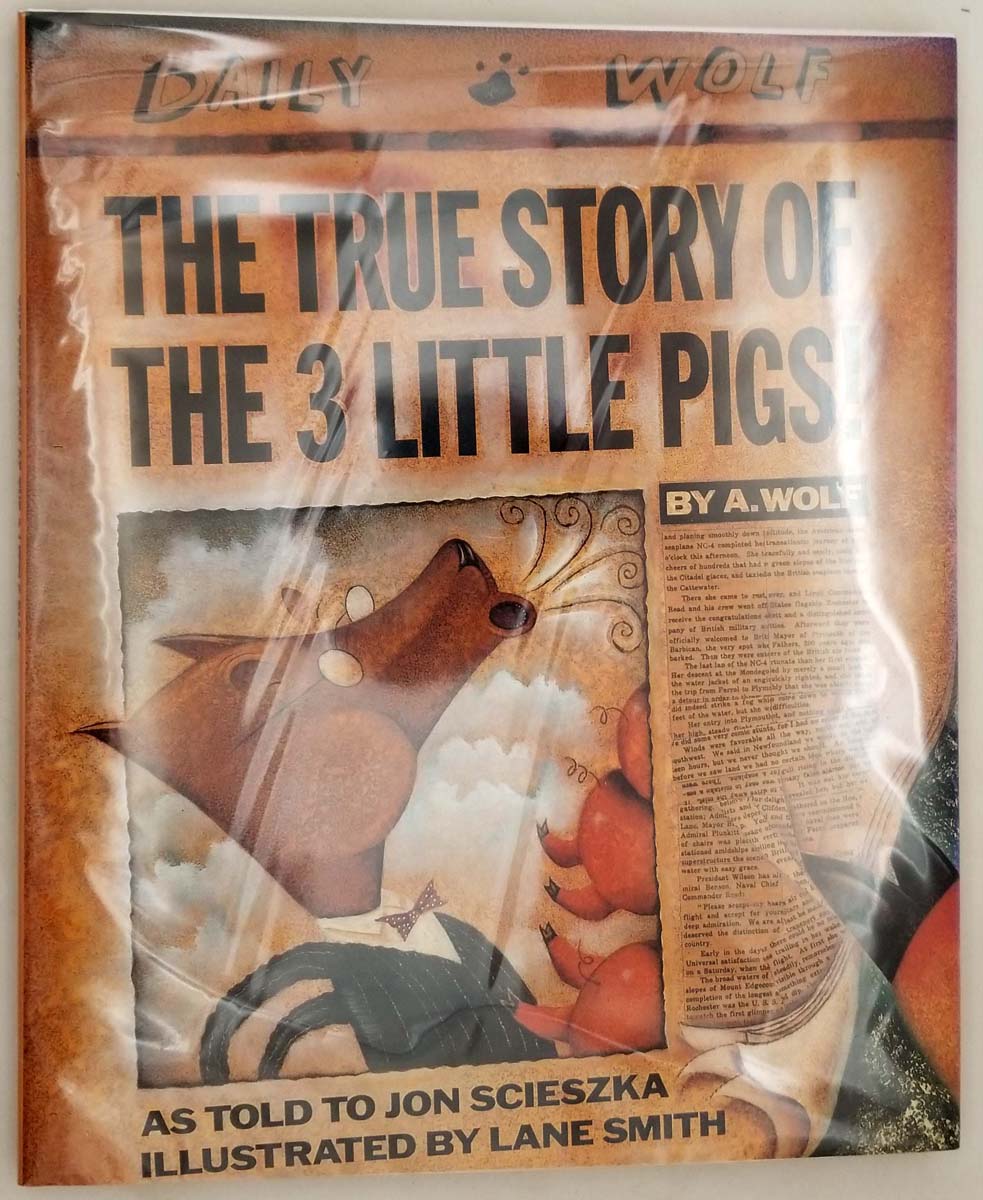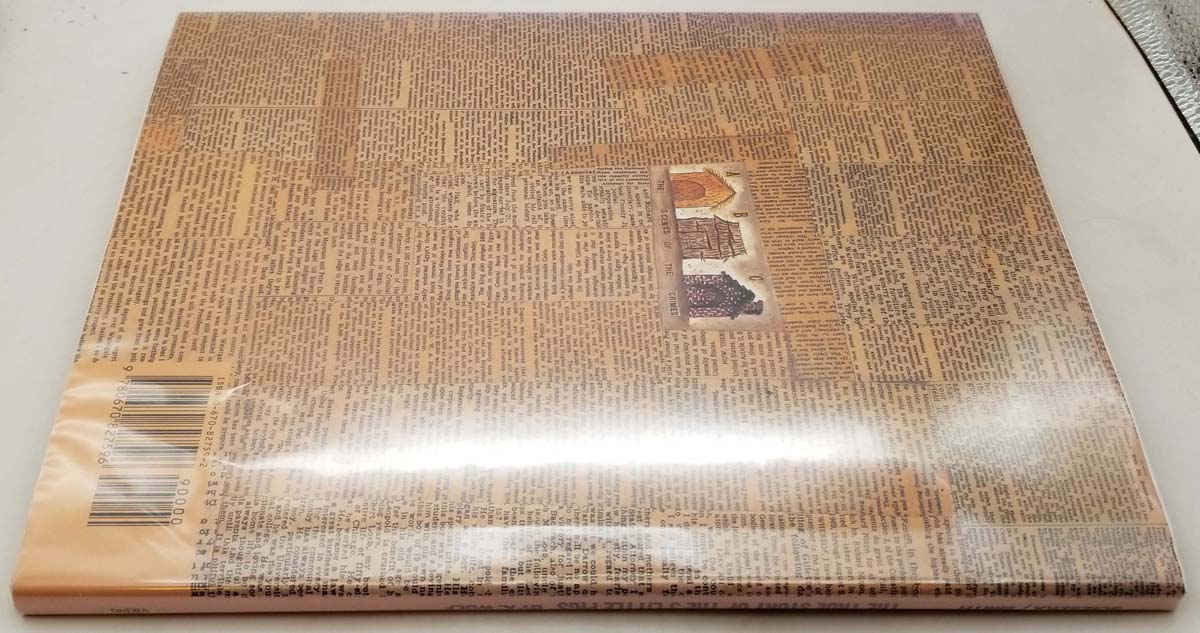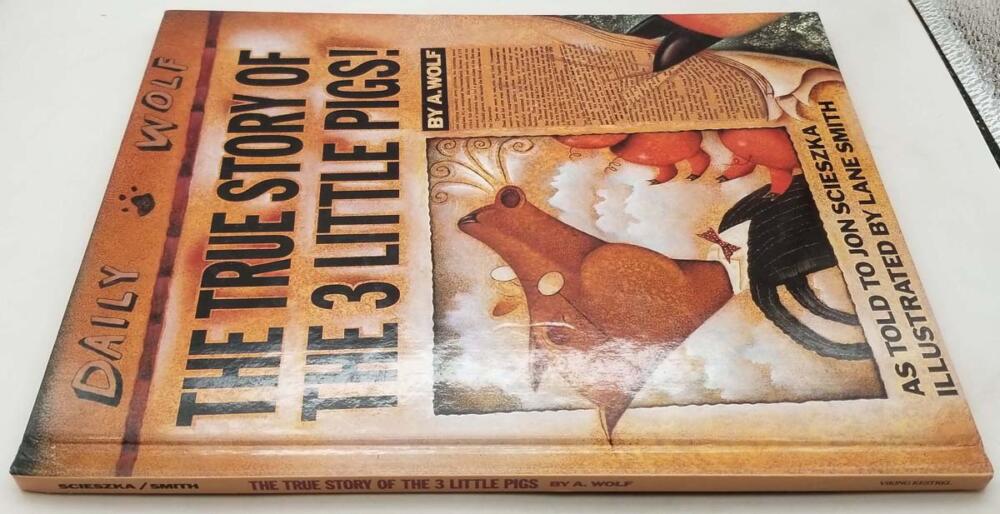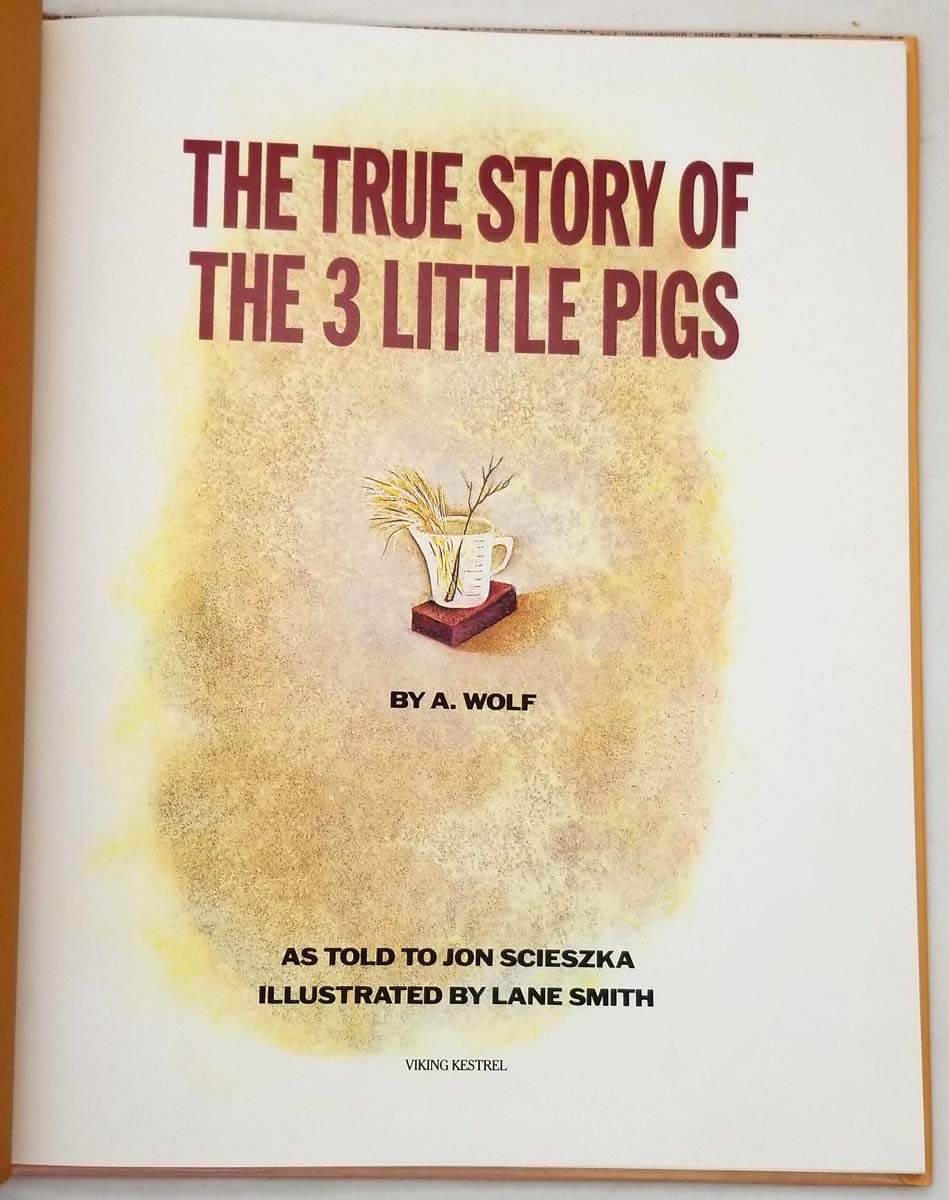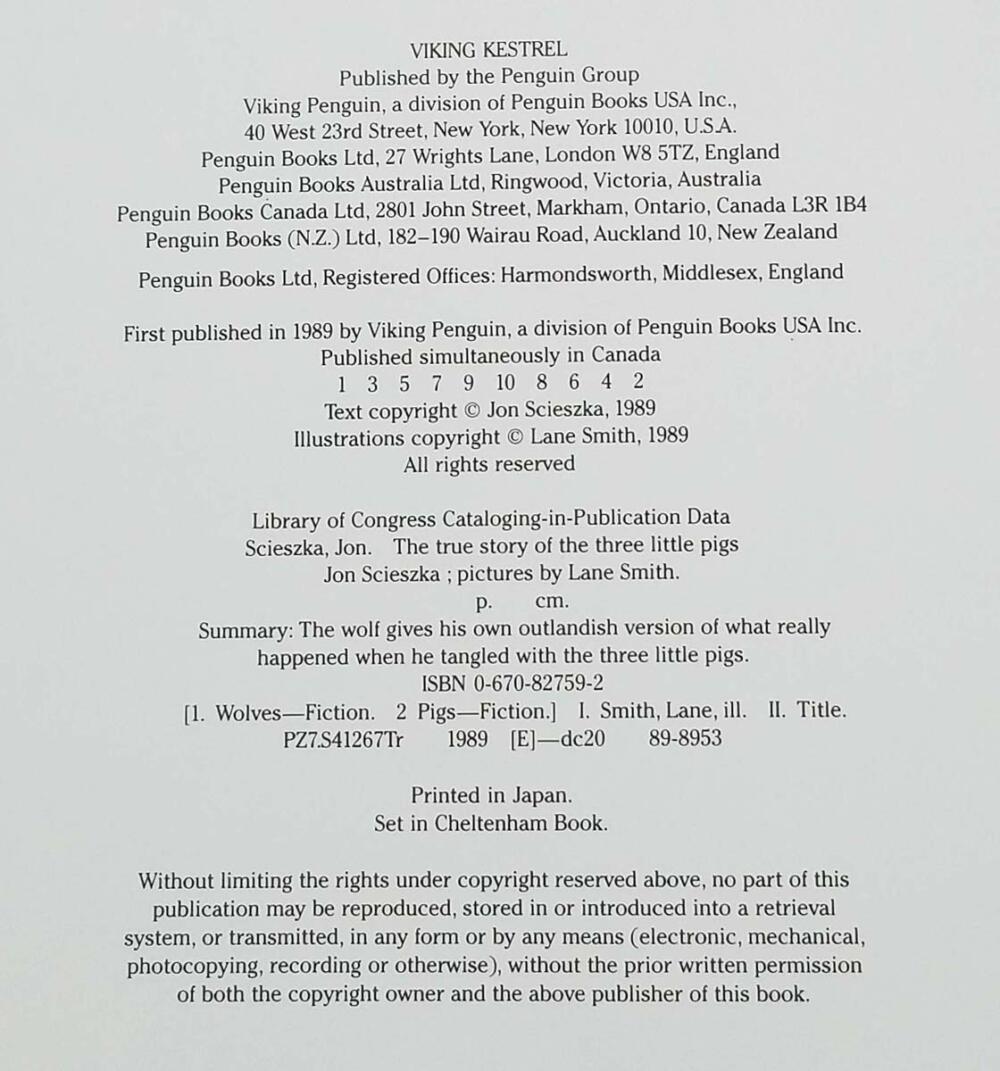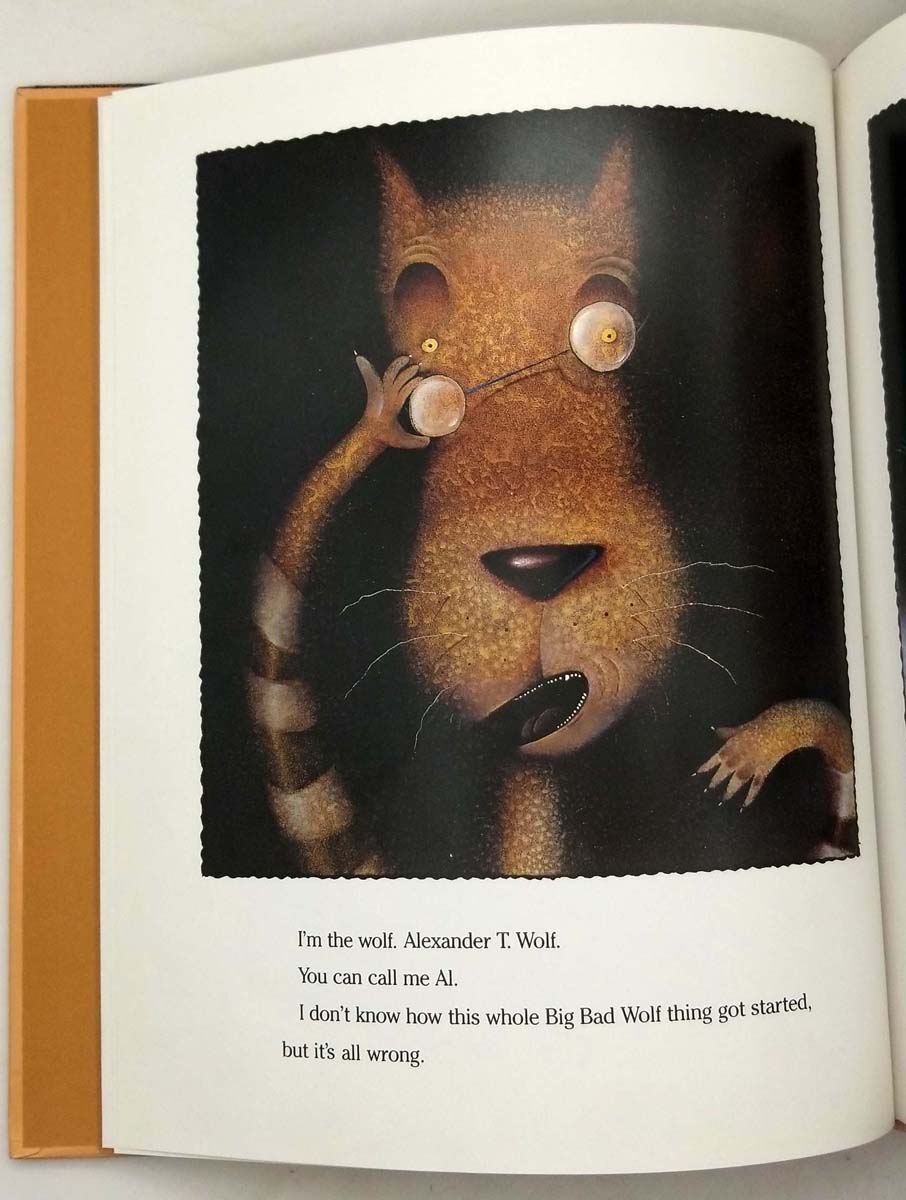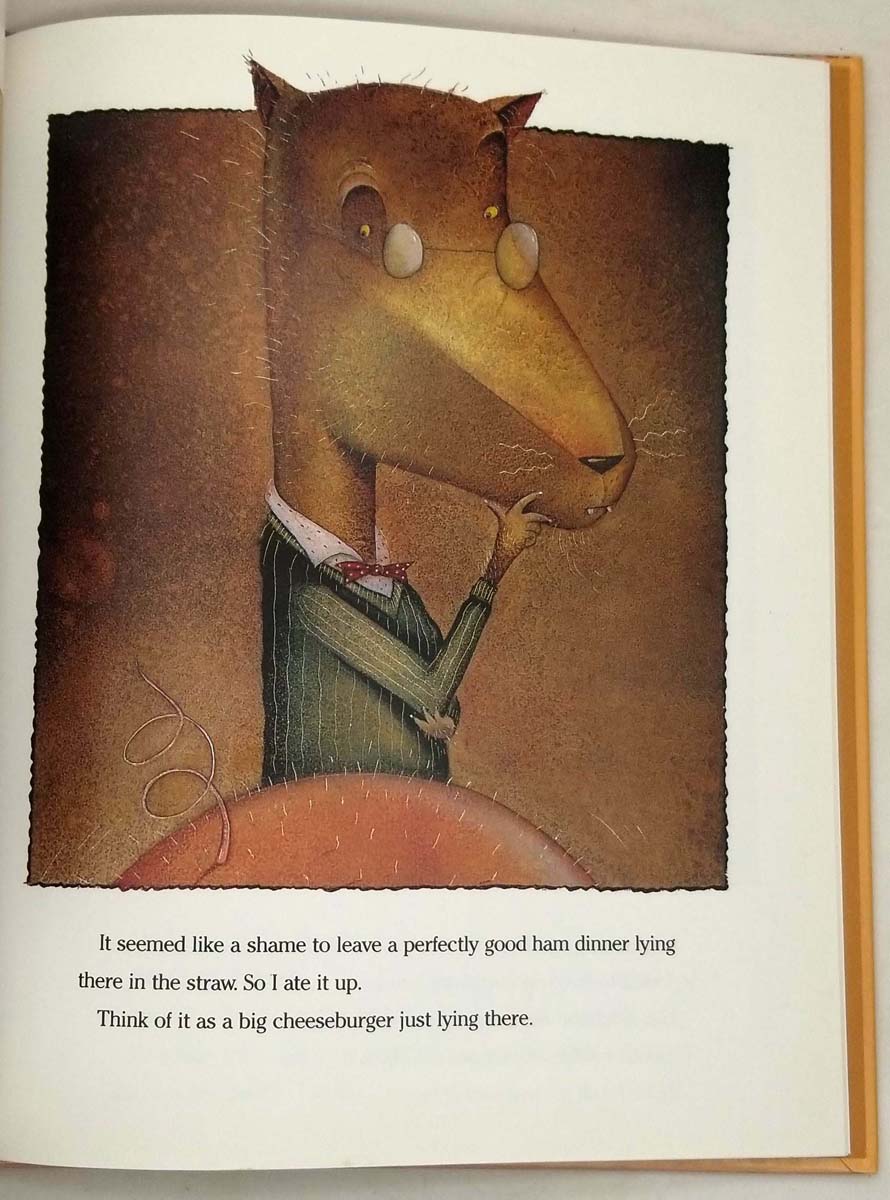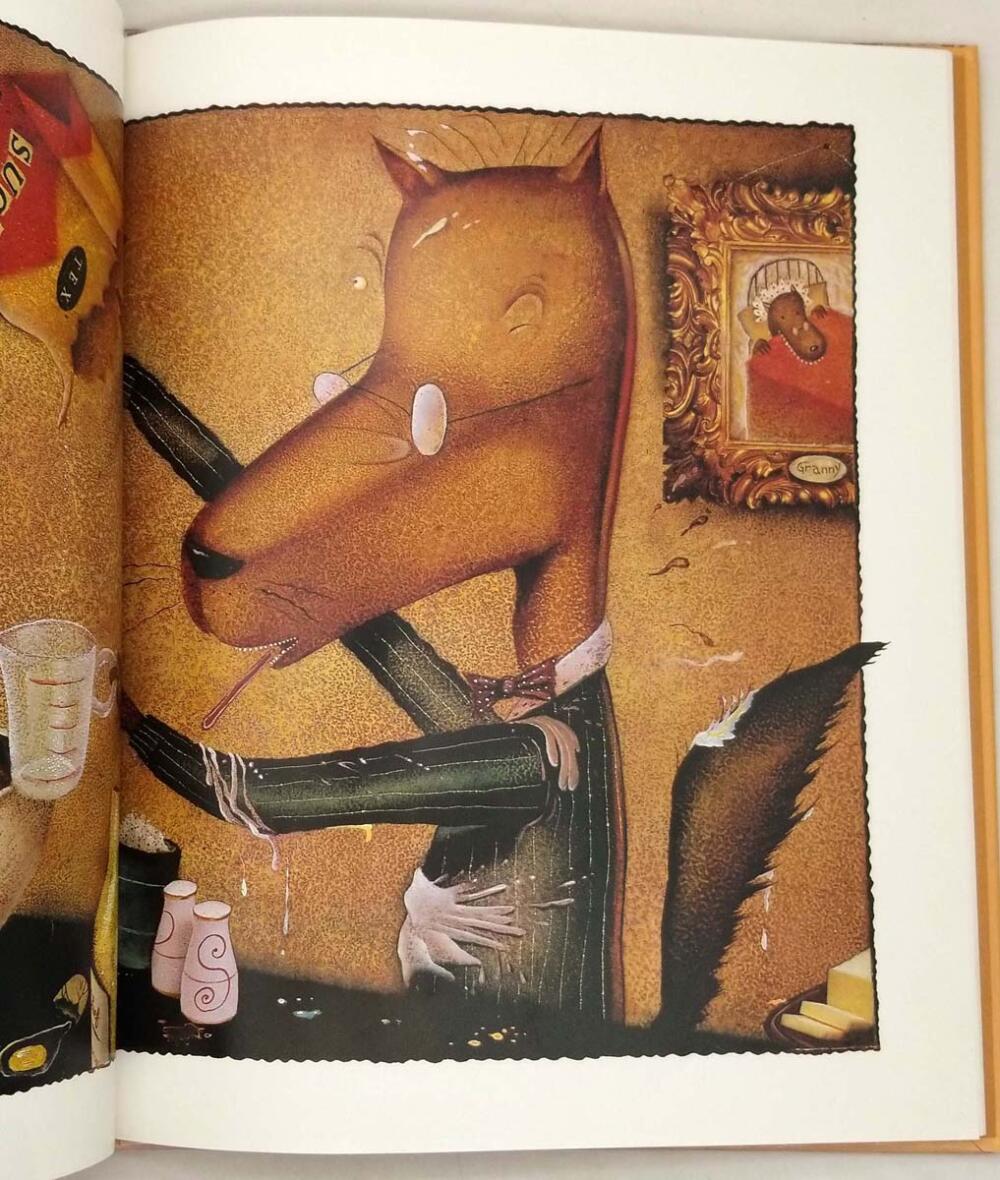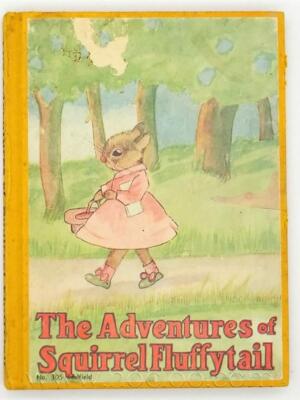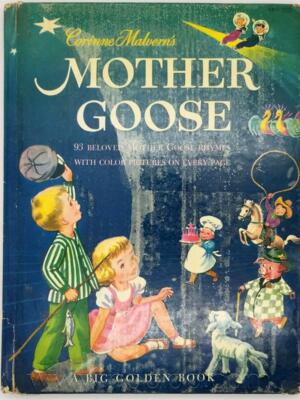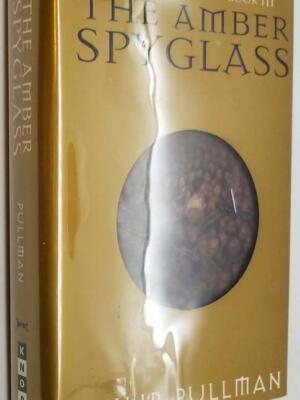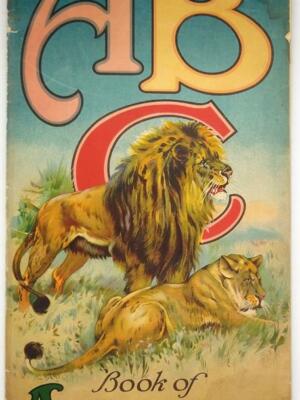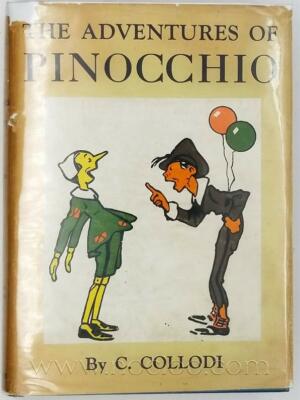The True Story of the Three Little Pigs (1989) by Jon Scieszka, with illustrations by Lane Smith, is a groundbreaking postmodern picture book that upended traditional fairy tales by giving the Big Bad Wolf his day in court. Published by Viking Kestrel, this subversive retelling—narrated by “A. Wolf” himself—claims the whole story was a media misunderstanding: a simple sneeze (and a craving for sugar) led to the pigs’ accidental demise, not malice. Smith’s mixed-media collages, combining rough charcoal textures with vintage newspaper clippings, visually reinforced the wolf’s faux-innocent testimony while slyly undermining it through visual clues (like a wolf-shaped shadow looming over the third pig’s brick house).
The 1989 first edition, with its distinctive red cloth spine and bold typography, became an instant classic of children’s metafiction—winning awards and sparking debates about perspective and unreliable narration. Its enduring classroom relevance (often used to teach point of view) has kept early printings in demand, though later editions softened Smith’s original gritty aesthetic. A pivotal work that ushered in 1990s picture book innovation, it remains the gold standard for fractured fairy tales.
